By: Muntaha Jabbar
The recent escalation in Southern Syria demonstrates the fragility of peace constructed through coercion and resistance. The region, already plagued by deep-seated sectarian divisions, Israeli occupation, and Western dominance, has once again witnessed the collapse of the fragile peace that was anticipated following the fall of the Assad regime.
The long-standing dynastic and minority Alawite rule, which ended in December 2024 with the rise of the revolutionary movement led by Ahmad al-Sharaa, has ultimately failed to protect the rights of minority communities. The renewed stability has reopened the doors for external actors to exploit Syria’s internal sovereignty, using its people as shields for advancing their strategic goals as part of the broader Middle East.
The Druze and Bedouin communities are two significant sectarian groups in Syria, each with a deep-seated historical presence. Tracing the historical trajectories of these communities offers a critical analysis of their contemporary escalation and deep-rooted tensions. Understanding their distinct religious, political, and social evolution in the Middle East provides a valuable foundation for analyzing the root causes of their rivalry.
At the outset, the Druze are a distinct religious sect that emerged in the 10th century as a sectarian branch of Ismaili Islam. However, they do not identify themselves as Muslims because they do not believe in incarnation and are a closed-religious community, which does not accept converts, unlike Islam. Today, approximately 1 million Druze reside within Syria with additional presence in Lebanon, Israel, and the Golan Heights, an area annexed by Israel.
Contrary to that, Syria’s broader demographic landscape consists predominantly of Sunni Muslims, making up 70 per cent of the population. Whereas Alawites, an offshoot of Shia Muslims, constitute 3 percent of the total Syrian population. The Druze community has persistently advocated for minority rights, urging the Syrian government to uphold the inclusive and equitable policies for all sects.
In the Sweida district, where the tensions have recently escalated, the Druze form the overwhelming majority, making up 80 per cent of the population, followed by the Christian community, whereas Sunni Muslims represent a minority.
Moreover, during 2015 and 2018, Druze militias assumed the role of net security provider in Sweida, particularly in response to the ISIS incursions. In 2018, a devastating wave of attacks by ISIS took place, resulting in the deaths of nearly 200 Druze people. In the aftermath of these attacks, tensions between Druze communities and Syrian forces escalated, as the community resisted forced recruitment into the military and state encroachment on Druze. This period is considered to be a turning point in the Druze’s security posture, as they began to defend their territory from external threats and internal state control.
The growing autonomy and defiance led to a critical shift in the regime’s approach. A series of targeted assassinations of well-known Druze figures was directly attributed to state operatives, which intensified mistrust and a sense of separation. Druze people started to believe that the Assad regime is not only failing to safeguard minority rights, but actively weaponizing the security vacuum to undermine Druze autonomy and bring the region back under state control.
In contrast, the Bedouin tribes in Syria are predominantly Sunni Muslims, and they have experienced long-standing tensions with the Druze community. Traditionally, the Bedouin were primarily organized and engaged in herding livestock across the Badiya, the vast region of desert in central and eastern Syria. The term Bedouin is derived from an Arabic word, ‘badawi’, which literally means “desert dweller” and historically refers to a person with a pastoral and nomadic way of life.
Al-Sharaa wants to sell the idea that “Syria is stabilizing.” Still, recent intercommunal violencer and the death of approximately 940 Syrian people within a week show that old grievances are unresolved, tribal justice still reigns, and the social fabric in Syria is torn. It suggests that the Syrian civil war may be “over” militarily, but not socially and politically.
The conflict between Druze and Bedouin tribes escalated following a specific incident in the district of Sweida, when a Bedouin man set up a security checkpoint and assaulted a Druze vegetable vendor. This act of violence sparked a series of tit-for-tat retaliations, resulting in the detention of multiple Druze and Bedouin tribesmen. Druze people detained several Bedouin tribesmen, and in response, Bedouins detained and abducted several Druze community people, prompting counter-retaliation. The situation immediately turned into violent armed clashes between two historic communities, with further deaths of approximately 940 Syrian people.
Historically, the complex interplay of sectarian tensions, land disputes, competition over minority rights, marginalization, and longstanding perceived grievances has contributed to Syria’s fragmented political and social landscape. These underlying root causes continue to manifest sometimes in the form of revolution, sometimes in the form of armed clashes, and sometimes in the form of terrorism and external actors’ intervention, particularly in regions like Sweida, where fault lines between communities remain volatile.
Equally important, the ongoing clashes in Syria continue to open doors for external actors to assert their influence and shape the country’s future to serve their own strategic goals. Among these actors, Israel comes first to pursue its regional objectives, often aligned with its expansionist ambitions as part of the broader Middle East.
In the aftermath of recent clashes between Druze and Bedouin, Israel immediately struck the Syrian Ministry of Defence and declared support for Syrian Druze. Observers suggest that Israel seeks to deepen its ties with Syrian Druze, particularly to capitalize on the shared ethnic and religious identity, as the Druze community serves in the Israeli military. By projecting solidarity with Syrian Druze, Israel appears to be cultivating goodwill among local militias, ultimately aimed at establishing a pro-Israel buffer zone in Southern Syria.
Israel’s strategy is to expose Ahmad al-Sharaa’s inability to control the situation, while positioning itself as the true protector of human rights. This calculated narrative allows Israel to divert the public’s attention from human rights violations and crimes against humanity carried out by Israel in Gaza.
However, the recent instability in Syria demonstrates several critical weaknesses of Ahmad al-Sharaa’s government, both internally and externally in the eyes of international and regional actors.
First, the fact that tribal groups (Druze and Bedouin) are clashing, yet the government has failed to stop this escalation ladder, shows the weak grip on state sovereignty and territorial control. This undermines the central government’s claim of national unity and post-war stability and recovery.
Secondly, minorities have lost trust in the government, which was playing a neutral role in Syrian affairs. Now, they view the Syrian government either as ignorant or against them, eroding the loyalty, which is dangerous for a leader trying to rebuild a state after decades of civil war.
Thirdly, al-Sharaa is trying to position himself as a reformer or restorer of sustainable peace in Syria, but unfortunately, violence among tribes and historic communities, especially involving state-linked militias, contradicts that image of a reformer or restorer of peace.
Fourthly, as always, chaos in Syria opens windows for foreign interventions, including by Iran, Israel, Turkey, and even the USA, to intervene or gain influence for their strategic goals. A strong state would keep its borders tight and prevent any incursion from manipulating internal conflicts. Due to fragile peace and porous borders, we see Israeli Druze crossing the Syrian border from the South, Iranian proxies are ready to mobilize and take advantage of the situation for the Hezbollah channel, and the US and Turkish diplomacy is intensifying, all signs that al-Sharaa has no control over Syria.
Lastly, al-Sharaa wants to sell the idea that “Syria is stabilizing.” Still, recent intercommunal violence and the death of approximately 940 Syrian people within a week show that old grievances are unresolved, tribal justice still reigns, and the social fabric in Syria is torn. It suggests that the Syrian civil war may be “over” militarily, but not socially and politically.
The writer is a freelance columnist



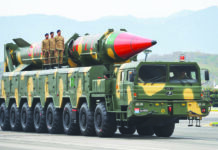

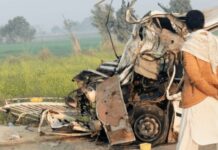
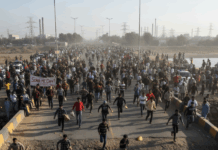

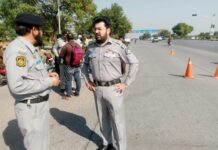
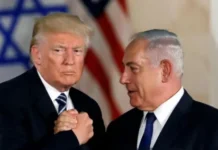
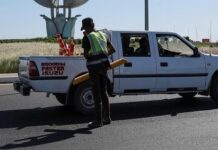
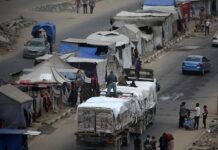
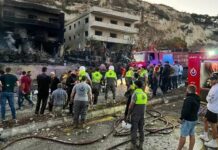

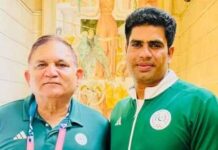




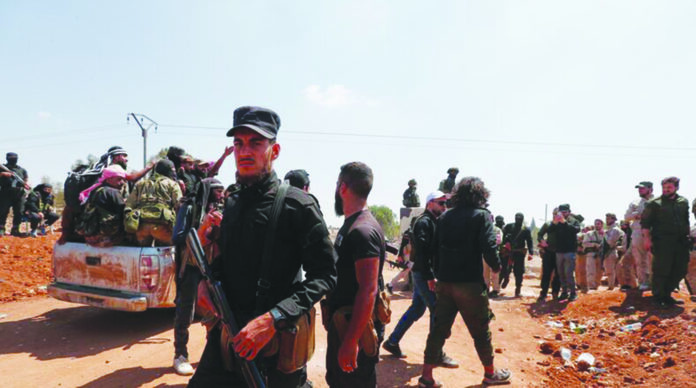




Thanks a lot for sharing this with all people you actually understand what you’re speaking approximately! Bookmarked. Please additionally seek advice from my web site =). We will have a link alternate contract among us!
Hello there, simply become alert to your weblog thru Google, and found that it’s really informative. I’m going to watch out for brussels. I will appreciate if you happen to continue this in future. Many other people will be benefited from your writing. Cheers!
Good blog! I really love how it is simple on my eyes and the data are well written. I’m wondering how I might be notified whenever a new post has been made. I have subscribed to your RSS which must do the trick! Have a nice day!
Hello! I’m at work surfing around your blog from my new iphone 3gs! Just wanted to say I love reading through your blog and look forward to all your posts! Keep up the superb work!
Fantastic website. A lot of useful information here. I am sending it to some friends ans also sharing in delicious. And certainly, thanks for your effort!
The Pink Salt Trick is a minimalist but effective morning routine: Just drink a glass of lukewarm water mixed with a pinch of Himalayan pink salt as soon as you wake up.
Fantastic website. Lots of useful information here. I’m sending it to a few friends ans also sharing in delicious. And of course, thanks for your sweat!
It’s in reality a great and helpful piece of information. I’m glad that you just shared this helpful info with us. Please stay us up to date like this. Thank you for sharing.
A formidable share, I just given this onto a colleague who was doing a little evaluation on this. And he in fact bought me breakfast because I discovered it for him.. smile. So let me reword that: Thnx for the deal with! However yeah Thnkx for spending the time to debate this, I feel strongly about it and love studying more on this topic. If potential, as you turn out to be experience, would you mind updating your weblog with extra particulars? It’s highly useful for me. Massive thumb up for this blog publish!
The Pink Salt Trick is a minimalist but effective morning routine: Just drink a glass of lukewarm water mixed with a pinch of Himalayan pink salt as soon as you wake up.
Greetings! Very helpful advice on this article! It is the little changes that make the biggest changes. Thanks a lot for sharing!
The Pink Salt Trick is a minimalist but effective morning routine: Just drink a glass of lukewarm water mixed with a pinch of Himalayan pink salt as soon as you wake up.
It is really a great and useful piece of info. I?¦m happy that you shared this helpful information with us. Please keep us informed like this. Thank you for sharing.
The Pink Salt Trick is a minimalist but effective morning routine: Just drink a glass of lukewarm water mixed with a pinch of Himalayan pink salt as soon as you wake up.
Perfect work you have done, this internet site is really cool with superb information.
What’s Happening i’m new to this, I stumbled upon this I’ve found It positively useful and it has aided me out loads. I hope to contribute & help other users like its aided me. Good job.
I am really impressed with your writing skills as well as with the layout on your weblog. Is this a paid theme or did you modify it yourself? Anyway keep up the nice quality writing, it is rare to see a nice blog like this one today..
The very heart of your writing whilst sounding agreeable originally, did not really settle perfectly with me after some time. Someplace within the paragraphs you actually managed to make me a believer but only for a short while. I nevertheless have a problem with your jumps in logic and you might do well to help fill in those gaps. If you actually can accomplish that, I would surely be amazed.
I have been surfing online more than three hours as of late, yet I never found any fascinating article like yours. It’s beautiful value sufficient for me. Personally, if all website owners and bloggers made excellent content as you did, the net will be a lot more helpful than ever before. “Where facts are few, experts are many.” by Donald R. Gannon.
Thank you for the sensible critique. Me & my neighbor were just preparing to do some research about this. We got a grab a book from our area library but I think I learned more clear from this post. I am very glad to see such excellent information being shared freely out there.
I am impressed with this internet site, rattling I am a big fan .
You should take part in a contest for one of the best blogs on the web. I will recommend this site!
Today, I went to the beach with my children. I found a sea shell and gave it to my 4 year old daughter and said “You can hear the ocean if you put this to your ear.” She put the shell to her ear and screamed. There was a hermit crab inside and it pinched her ear. She never wants to go back! LoL I know this is entirely off topic but I had to tell someone!
I wanted to draft you this little remark to help say thanks a lot over again for those amazing thoughts you have shown in this article. This has been certainly unbelievably open-handed with you to grant openly what exactly most of us would have supplied for an electronic book to end up making some dough for themselves, primarily considering the fact that you could have done it if you wanted. These tricks also worked to become a easy way to understand that most people have a similar keenness just like my personal own to know a great deal more pertaining to this issue. I’m certain there are numerous more pleasurable occasions in the future for people who looked over your blog post.
I’m not that much of a internet reader to be honest but your sites really nice, keep it up! I’ll go ahead and bookmark your site to come back later. Cheers
wonderful points altogether, you just gained a brand new reader. What would you recommend about your post that you made some days ago? Any positive?
Terrific work! This is the type of information that should be shared around the net. Shame on Google for not positioning this post higher! Come on over and visit my site . Thanks =)
Hey There. I found your weblog the usage of msn. That is an extremely well written article. I’ll make sure to bookmark it and come back to read extra of your useful information. Thanks for the post. I will certainly comeback.
Hey, you used to write excellent, but the last few posts have been kinda boring… I miss your super writings. Past few posts are just a bit out of track! come on!
I’m no longer sure where you’re getting your information, however good topic. I must spend a while studying much more or figuring out more. Thank you for great info I was in search of this information for my mission.
I’m really enjoying the theme/design of your website. Do you ever run into any internet browser compatibility problems? A small number of my blog visitors have complained about my blog not operating correctly in Explorer but looks great in Chrome. Do you have any recommendations to help fix this issue?
I’ve read a few good stuff here. Definitely worth bookmarking for revisiting. I wonder how much effort you put to create such a wonderful informative web site.
I loved as much as you will receive carried out right here. The sketch is attractive, your authored subject matter stylish. nonetheless, you command get got an edginess over that you wish be delivering the following. unwell unquestionably come further formerly again as exactly the same nearly very often inside case you shield this increase.
Keep working ,terrific job!
I love it when people come together and share opinions, great blog, keep it up.
An attention-grabbing dialogue is price comment. I believe that you need to write more on this subject, it might not be a taboo subject but usually individuals are not sufficient to speak on such topics. To the next. Cheers
But wanna admit that this is invaluable, Thanks for taking your time to write this.
Your home is valueble for me. Thanks!…
obviously like your website however you need to check the spelling on quite a few of your posts. A number of them are rife with spelling issues and I find it very bothersome to inform the reality then again I¦ll certainly come again again.
It is actually a great and helpful piece of info. I’m satisfied that you simply shared this helpful info with us. Please keep us up to date like this. Thank you for sharing.
Very good written story. It will be helpful to anybody who utilizes it, as well as myself. Keep doing what you are doing – can’r wait to read more posts.
Great write-up, I?¦m regular visitor of one?¦s blog, maintain up the nice operate, and It’s going to be a regular visitor for a lengthy time.
Very interesting points you have noted, regards for putting up.
I together with my guys have already been following the best tactics from your website while at once developed a horrible suspicion I never expressed respect to the blog owner for those tips. Most of the guys came as a result passionate to read all of them and now have in actuality been making the most of those things. Thank you for being well helpful as well as for selecting such tremendous themes most people are really wanting to know about. My very own sincere regret for not expressing gratitude to earlier.
I genuinely enjoy looking through on this site, it has got superb content. “Violence commands both literature and life, and violence is always crude and distorted.” by Ellen Glasgow.
Throughout the great pattern of things you’ll get a B- for hard work. Where exactly you lost me personally was on the details. You know, as the maxim goes, the devil is in the details… And it could not be much more correct at this point. Having said that, permit me inform you exactly what did work. The writing can be pretty engaging and that is probably the reason why I am taking the effort to opine. I do not really make it a regular habit of doing that. 2nd, while I can see the leaps in reason you make, I am not really sure of how you appear to unite your details which help to make the actual conclusion. For the moment I will, no doubt yield to your position however wish in the future you actually link your facts much better.
This is the appropriate weblog for anybody who desires to search out out about this topic. You understand so much its virtually onerous to argue with you (not that I actually would want…HaHa). You definitely put a new spin on a topic thats been written about for years. Nice stuff, simply great!
Some truly interesting info , well written and generally user genial.
I’m still learning from you, while I’m improving myself. I definitely enjoy reading everything that is posted on your blog.Keep the tips coming. I loved it!
Thanks for helping out, wonderful information. “Courage comes and goes. Hold on for the next supply.” by Vicki Baum.
I found your blog website on google and check a couple of of your early posts. Proceed to keep up the superb operate. I just additional up your RSS feed to my MSN Information Reader. In search of forward to reading more from you afterward!…
I’ve been absent for a while, but now I remember why I used to love this web site. Thanks, I will try and check back more frequently. How frequently you update your website?
Its like you read my mind! You seem to know so much about this, like you wrote the book in it or something. I think that you can do with some pics to drive the message home a bit, but instead of that, this is excellent blog. A great read. I will certainly be back.
F*ckin’ remarkable things here. I’m very glad to see your post. Thanks a lot and i’m looking forward to contact you. Will you please drop me a e-mail?
Some truly tremendous work on behalf of the owner of this site, perfectly outstanding subject material.
Rattling nice pattern and fantastic subject material, practically nothing else we need : D.
I’m truly enjoying the design and layout of your site. It’s a very easy on the eyes which makes it much more pleasant for me to come here and visit more often. Did you hire out a developer to create your theme? Superb work!
Satirical writing transforms righteous indignation into infectious amusement. — Alan @ comedywriter.info
Satire is the art of using exaggeration to reveal a more profound, hidden truth. — Toni @ Satire.info
Really enjoyed this blog post, how can I make is so that I get an alert email whenever you publish a new post?
Hi , I do believe this is an excellent blog. I stumbled upon it on Yahoo , i will come back once again. Money and freedom is the best way to change, may you be rich and help other people.
là điểm hẹn lý tưởng dành cho những ai yêu thích thế giới game đổi thưởng trực tuyến. Ra đời từ năm 2020, sau 5 năm phát triển không ngừng, nhà cái đã trở thành lựa chọn số một của hàng triệu người chơi trong và ngoài nước. Với kho trò chơi đa dạng, công nghệ hiện đại cùng hệ thống bảo mật tiên tiến, sân chơi này không chỉ mang đến những phút giây giải trí sôi động mà còn mở ra vô vàn cơ hội thắng lớn cho thành viên tham gia.
Satire is the laughter that comes from the gap between what is said and what is meant. — Toni @ Satire.info
555win không đơn thuần là một nhà cái – đó là điểm hẹn của những người yêu thích sự mới mẻ và đột phá trong cá cược trực tuyến. Với tầm nhìn chiến lược cùng công nghệ hiện đại, nền tảng này mang đến trải nghiệm đẳng cấp, nơi mỗi lượt đặt cược đều chứa đựng cơ hội thay đổi cuộc chơi. Đây chính là xu hướng giải trí thông minh mà người chơi không thể bỏ qua trong năm 2025.
PKWIN – Sân chơi cá cược đẳng cấp với bảo mật tuyệt đối, cam kết giữ an toàn tuyệt đối cho mọi giao dịch và thông tin người chơi. Đặc biệt, hệ thống trả thưởng siêu tốc giúp bạn nhận tiền chỉ trong vài phút. Đăng ký ngay hôm nay để nhận thưởng 188K miễn phí và bắt đầu hành trình săn thưởng hấp dẫn cùng PKWIN!
Youre so cool! I dont suppose Ive learn something like this before. So good to search out somebody with some unique thoughts on this subject. realy thank you for starting this up. this web site is one thing that is needed on the internet, somebody with a bit originality. useful job for bringing one thing new to the internet!
A society that can’t produce good satire is a society that is too afraid to look at itself. — Toni @ comedywriter.info
Đừng bỏ lỡ PKWIN – lựa chọn số 1 cho mọi tín đồ cá cược trực tuyến! Từ bảo mật dữ liệu tuyệt đối, giao diện thân thiện đến trả thưởng nhanh như chớp, mọi thứ đều được tối ưu để mang lại trải nghiệm hoàn hảo. Tham gia ngay hôm nay và rinh ngay 188K về tài khoản chỉ với vài bước đăng ký đơn giản.
Together with everything which seems to be building within this specific subject material, many of your opinions are actually rather refreshing. Nevertheless, I beg your pardon, but I can not give credence to your whole suggestion, all be it stimulating none the less. It appears to everybody that your opinions are generally not entirely rationalized and in fact you are yourself not even completely certain of your argument. In any event I did take pleasure in examining it.
I like this web site very much, Its a rattling nice post to read and incur info . “God cannot alter the past, but historians can.” by Samuel Butler.
Great ?V I should definitely pronounce, impressed with your website. I had no trouble navigating through all the tabs as well as related information ended up being truly simple to do to access. I recently found what I hoped for before you know it at all. Quite unusual. Is likely to appreciate it for those who add forums or something, web site theme . a tones way for your customer to communicate. Excellent task..
I believe this site contains some real great info for everyone : D.
Yeah bookmaking this wasn’t a bad decision outstanding post! .
This is the right blog for anyone who wants to find out about this topic. You realize so much its almost hard to argue with you (not that I actually would want…HaHa). You definitely put a new spin on a topic thats been written about for years. Great stuff, just great!
Hi there, i read your blog from time to time and i own a similar one and i was just curious if you get a lot of spam feedback? If so how do you protect against it, any plugin or anything you can suggest? I get so much lately it’s driving me crazy so any assistance is very much appreciated.
It’s a shame you don’t have a donate button! I’d most certainly donate to this brilliant blog! I guess for now i’ll settle for book-marking and adding your RSS feed to my Google account. I look forward to new updates and will share this blog with my Facebook group. Chat soon!
This is a topic close to my heart cheers, where are your contact details though?
Your place is valueble for me. Thanks!…
Woh I love your blog posts, saved to favorites! .
I really enjoy examining on this web site, it has great posts.
I think this is one of the most important info for me. And i am glad reading your article. But want to remark on few general things, The web site style is great, the articles is really great : D. Good job, cheers
hey there and thank you for your info – I’ve definitely picked up something new from right here. I did however expertise a few technical issues using this site, since I experienced to reload the site lots of times previous to I could get it to load properly. I had been wondering if your hosting is OK? Not that I’m complaining, but slow loading instances times will very frequently affect your placement in google and could damage your quality score if advertising and marketing with Adwords. Anyway I am adding this RSS to my email and could look out for a lot more of your respective intriguing content. Make sure you update this again soon..
I like this post, enjoyed this one regards for posting. “Abortion is advocated only by persons who have themselves been born.” by Ronald Reagan.
Great site. A lot of helpful information here. I¦m sending it to a few friends ans additionally sharing in delicious. And certainly, thanks to your sweat!
Flash Burn is a revolutionary natural supplement that has been transforming the lives of thousands of people struggling with excess weight. Developed with a 100 natural and scientifically proven formula
The Pink Salt Trick is a minimalist but effective morning routine: Just drink a glass of lukewarm water mixed with a pinch of Himalayan pink salt as soon as you wake up.
I like what you guys are up also. Such clever work and reporting! Keep up the superb works guys I have incorporated you guys to my blogroll. I think it’ll improve the value of my website 🙂
I haven¦t checked in here for a while as I thought it was getting boring, but the last few posts are great quality so I guess I¦ll add you back to my daily bloglist. You deserve it my friend 🙂
I’m still learning from you, but I’m improving myself. I definitely liked reading everything that is posted on your website.Keep the information coming. I enjoyed it!
Heya i’m for the primary time here. I came across this board and I find It really useful & it helped me out much. I am hoping to offer one thing again and aid others like you aided me.
Would love to forever get updated great blog! .
You are a very clever individual!
Thank you for the good writeup. It in reality was a leisure account it. Glance complex to far brought agreeable from you! However, how could we be in contact?
Thanx for the effort, keep up the good work Great work, I am going to start a small Blog Engine course work using your site I hope you enjoy blogging with the popular BlogEngine.net.Thethoughts you express are really awesome. Hope you will right some more posts.
I do love the manner in which you have framed this particular problem and it really does supply us a lot of fodder for consideration. However, coming from just what I have experienced, I basically hope as the feed-back stack on that men and women stay on point and in no way start upon a tirade of some other news du jour. Yet, thank you for this superb piece and whilst I can not necessarily go along with it in totality, I regard your perspective.
I haven’t checked in here for a while since I thought it was getting boring, but the last several posts are great quality so I guess I’ll add you back to my daily bloglist. You deserve it my friend 🙂
Thanks a lot for sharing this with all of us you actually understand what you’re talking approximately! Bookmarked. Kindly also discuss with my web site =). We may have a link exchange arrangement between us!
I think this internet site holds very superb composed subject matter posts.
Appreciating the time and effort you put into your website and in depth information you offer. It’s awesome to come across a blog every once in a while that isn’t the same outdated rehashed information. Wonderful read! I’ve saved your site and I’m including your RSS feeds to my Google account.
I dugg some of you post as I thought they were extremely helpful handy
You have observed very interesting details! ps decent site.
As I website possessor I believe the subject material here is rattling excellent, thankyou for your efforts.
I’ve been browsing on-line more than 3 hours lately, but I by no means found any interesting article like yours. It’s pretty value sufficient for me. In my opinion, if all site owners and bloggers made good content as you did, the web can be much more useful than ever before.
Most of the things you say happens to be astonishingly accurate and it makes me wonder why I had not looked at this with this light before. This particular article really did switch the light on for me as far as this subject goes. Nonetheless at this time there is just one position I am not necessarily too comfortable with so whilst I attempt to reconcile that with the actual central theme of your issue, permit me observe what the rest of the readers have to say.Very well done.
Its superb as your other blog posts : D, appreciate it for posting. “What makes something special is not just what you have to gain, but what you feel there is to lose.” by Andre Agassi.
Hey There. I found your blog using msn. This is a very well written article. I’ll make sure to bookmark it and return to read more of your useful info. Thanks for the post. I will definitely return.
I think this is among the such a lot significant information for me. And i am satisfied reading your article. But want to commentary on few basic things, The website taste is wonderful, the articles is in reality nice : D. Good activity, cheers
Excellent read, I just passed this onto a friend who was doing some research on that. And he just bought me lunch since I found it for him smile Therefore let me rephrase that: Thank you for lunch! “One who’s our friend is fond of us one who’s fond of us isn’t necessarily our friend.” by Geoffrey F. Albert.
Nice post. I was checking constantly this blog and I’m impressed! Very helpful info specially the last part 🙂 I care for such info a lot. I was looking for this particular information for a long time. Thank you and best of luck.
Real great visual appeal on this internet site, I’d value it 10 10.
Just wanna comment on few general things, The website design and style is perfect, the subject material is very excellent : D.
Some truly excellent posts on this site, regards for contribution. “The spirit is the true self.” by Marcus Tullius Cicero.
I dugg some of you post as I cogitated they were very useful very useful
With havin so much content and articles do you ever run into any issues of plagorism or copyright violation? My website has a lot of unique content I’ve either written myself or outsourced but it appears a lot of it is popping it up all over the web without my agreement. Do you know any methods to help reduce content from being stolen? I’d definitely appreciate it.
Satirical news: where bias is the feature, not the bug. — Alan @ bohiney.com
Greetings! Very helpful advice on this article! It is the little changes that make the biggest changes. Thanks a lot for sharing!
Some genuinely interesting information, well written and loosely user friendly.
Thanks , I’ve just been searching for info approximately this subject for a while and yours is the greatest I’ve discovered till now. However, what in regards to the conclusion? Are you sure concerning the supply?
I think this is among the most significant information for me. And i’m glad reading your article. But want to remark on some general things, The site style is great, the articles is really excellent : D. Good job, cheers
I adore foregathering useful information , this post has got me even more info! .
As a Newbie, I am continuously exploring online for articles that can help me. Thank you